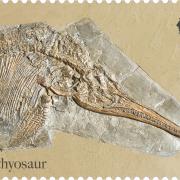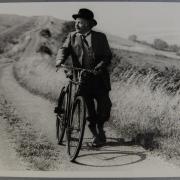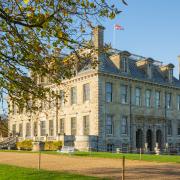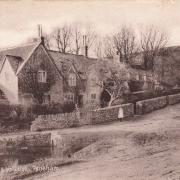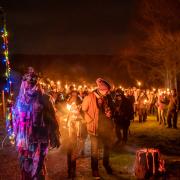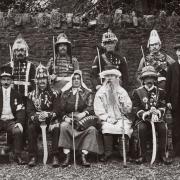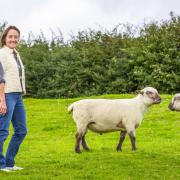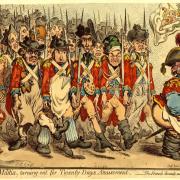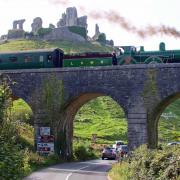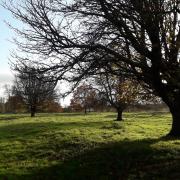Did your ancestors love or loathe their school days? There’s a wealth of archive material that can help add details about their education to your family tree. We also reveal some of the famous names who went to school in Dorset.
Even as a forty-something, this time of year always ignites memories of my school days. It got me wondering about our ancestors’ school days. What were they like? Fortunately for social historians, they are often well documented.
Schooling has not always been compulsory. Even in the 1860s around one third of children did not go to school. The UK Parliament website states: ‘In 1880 a further Education Act finally made school attendance compulsory between the ages of five and ten, though by the early 1890s attendance within this age group was falling short at 82%. Many children worked outside school hours - in 1901 the figure was put at 300,000 - and truancy was a major problem since parents could not afford to give up income earned by their children.’
Before the law ensured school attendance, wealthier families might hire a governess or tutor for their children or send them to a public school. Poorer children could gain a basic education at charity schools, ragged schools, industrial schools, National schools or British schools.
It’s worth trawling census records as this can often reveal if an ancestor was a boarder at a school or institution. I searched for The Old Ride School (a boys’ boarding school in Branksome Park) in the 1911 census and all the boarders and staff are listed. The school, which was founded in 1895, eventually moved to Wiltshire and closed in the mid-1990s.

Gosse’s Dorset School Days
The renowned naturalist, Philip Henry Gosse (1810 – 1888), who created the first public aquarium at London Zoo, attended a small fee-paying school in Poole. Founded in 1818 by Charles Sells, it was initially in Lagland Street, but after gaining popularity moved to larger premises on the lower High Street. In her acclaimed biography The Life of Philip Henry Gosse, Ann Thwaite records:
‘At Sells’ school Gosse was doing particularly well. The boy had a high regard for his teacher, considering him “agreeable in manners, well-informed and an efficient schoolmaster.” He would remember his particular method of teaching geography, “by chalking maps on the floor” and all sorts of “oral instructions on interesting subjects, a mode of teaching, which on Thursday afternoon at Sells”, I found so very fascinating and which tended perhaps, more than anything else, to make learning delightful to me. But Sells’ school cost money and there was very little to be had in [the Gosse household]. “Mother would sometimes, for economy, keep us at home a quarter to carry on our studies in the back garrett by ourselves.”’
School Records
How can we uncover more about our ancestor’s school days? The National Archives advises: ‘Records documenting the life of an individual school, where they survive, are most likely to be held by the school itself, by local libraries and archives or, if the school was run by a charity, in the archives of that charity.’
For Dorset’s educational establishments, the Dorset History Centre is a great place to start. They hold admission registers, logbooks and other records that might include school photographs and publications.
School logbooks are a particularly valuable resource, the earliest logbooks held by Dorset History Centre date from the 1860s. Compiled by the head teacher, and sometimes going into great details, they cover the day-to-day running of the school. This includes information about the teachers, useful if you have an ancestor who followed this profession, and the number of the children attending. Alongside these statistics are notes on misdemeanours and health, school inspections and important events and visitors. According to the Dorset History Centre, the school logbooks also ‘provide a valuable insight in rural areas such as Dorset, into the seasonal agricultural employment of children and the effects of bad weather, sickness, and disease on school life.’
In a transcription of the Hamworthy School Logbook (by J Ratcliffe) we are offered a glimpse of what it was like to be a pupil there in 1921: ‘A pleasant tone prevails. The children are well mannered, attentive, and communicative. There is an ample school garden and good and effective instruction is given in this subject; there seems some prospect of enabling the younger children to derive some benefit from the school garden and of bringing this subject into closer relation with the rest of the curriculum, as also of introducing some instruction in rough carpentry.’

Sherborne School
Founded in the 12th century, when the monastery next to Sherborne Abbey provided education to a few pupils, after the Dissolution it was re-founded as a grammar school in 1550 by King Edward VI, making it one of the oldest schools in the country. The current school was founded in 1850. Renowned alumni include the musician Chris Martin, actor Hugh Bonneville, novelist David Cornwell (writing as John Le Carre) and Enigma codebreaker Alan Turing. The Old Shirburnian Society (OSS) website oldshirburnian.org.uk houses the school archives, these include a register of staff and pupils, and the school magazine. The latter offers invaluable snippets of school life, poetry and writing from pupils, updates on former pupils and more. Local libraries and archives may have school magazines if they are not digitised.
The OSS website reveals David Cornwell’s less than idyllic views of his school days. ‘In the foreword to the 1991 edition of A Murder of Quality, David explained his reasons for leaving Sherborne School early in 1948: “I hated English boarding schools. I found them monstrous and still do, probably because I began my boarding school career at the age of five, at a place called St Martin’s Northwood, and did not end it till I was 16, when I flatly refused to return to Wescott House, Sherborne, on the solid grounds that I would take no more of such institutions.”’
The website also has transcripts of Alan Turing’s school reports, which includes this observation by the headmaster C.L.F. Boughey: ‘A gifted and distinguished boy, whose future career we shall watch with much interest. I have found him pleasant and friendly, and I believe that he has justified his appointment as a School Prefect.’
School reports can reveal more about someone’s developing personality, so look for them in your own family documents.
Sherborne Girls
In 1898 Mr Kenelm Wingfield Digby, MP for North Dorset and resident of Sherborne Castle, and his wife Charlotte put together a working party to establish a local girls’ school, like the town’s well-established boys’ school. He found a suitable headmistress in Miss Beatrice Mulliner, assistant mistress at Cheltenham Ladies College, who was in post until her retirement in 1930. The school opened in 1899 at Ramsam House, Greenhill with just 14 pupils, today it has 485 pupils. The school moved to its present site in 1903. More about the school’s history can be found at sherborne.com/about-us/our-history
Newspapers, both national and local, can be a wonderful resource for digging deeper into academic life. A search of the British Newspaper Archive (britishnewspaperarchive.co.uk) revealed a piece published in The Graphic, a British weekly illustrated newspaper, about Sherborne Girls' School. This included black and white photographs, as well as evocative descriptions from the reporter Winifred Stephens who visited the school in 1922: ‘Into the capacious classroom there trooped some 30 girls, pig-tailed or bobbed, clad in white shirts and dark skirts with an occasional jumper of blue, green or brown. Each took her seat at a separate desk. Standing on the platform at the end of the room, Miss Mulliner, in a conversational manner, seemed to be leading a discussion rather than giving a lecture. The questions put showed her object to be not so much to impart facts as to train the girls to think for themselves, to co-ordinate their ideas.’
Talbot Heath School
Another Dorset school which boasts an extensive online archive is Talbot Heath. It was founded in 1886 as Bournemouth High School by Mary Broad, a pioneer of girls’ education who was ‘determined to offer a first-class liberal education to the daughters of the professional classes’. It gradually outgrew its original premises and moved to its current site on Rothesay Road, Talbot Woods in 1936, and was renamed, Talbot Heath. Find more about its history at talbotheatharchives.org.
With auspicious alumni including the cookery writer Fanny Craddock, Wimbledon champion Virginia Wade, and acclaimed cellist Natalie Clein, the online archive is a real treasure trove. You can view school magazines, photographs and assorted ephemera including a memorial section in an old girls’ chronicle about Rose L Benns, who died on June 25th, 1945. Former Talbot Heath pupil, Dilys Powell, provided a charming write-up about her former teacher;
‘True, I can still hear the exasperation in her voice as she cried: “Girls! I’m sick of girls!” But I can also still see the look of beaming pride she wore on the stage in a school performance of Quality Street.’
School Days Archive
If you want to add school tales to your family tree, then start with yourself and your immediate family, saving memories, photos, reports and records for future generations to enjoy. Then delve into the past using archives, libraries, school photographs, school magazines, newspapers, school reports and more to build up the picture. Even if your family is not mentioned by name, these records will add a snapshot of their school days to your family tree. As is tradition at the start of the school year, why not buy a new pencil case and notebook to record your findings.
Katie Heaton is a Local History Librarian at Poole Museums poolemuseum.org.uk






